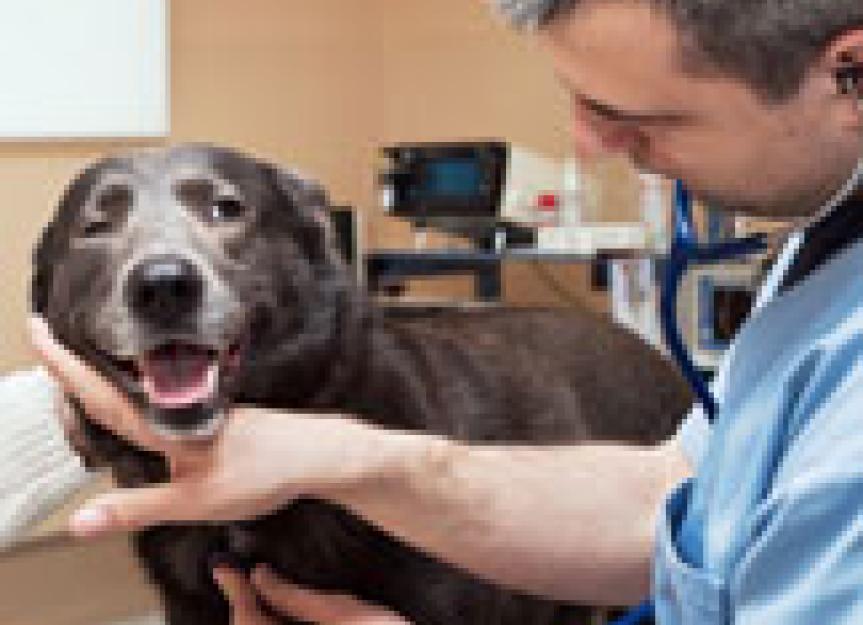Understanding Metronomic Chemotherapy for Pets with Cancer
In order for tumor cells to multiply and spread, they must develop their own blood supply through a process called angiogenesis. Angiogenesis inhibitor chemotherapy drugs work to stop or slow down this process, thereby controlling tumor growth. Metronomic chemotherapy is one example of angiogenesis inhibition treatment, which is becoming a popular treatment option for pets with cancer.
The definition of metronomic chemotherapy is variable, but usually refers to the continuous administration of low doses of oral chemotherapy drugs designed to target the endothelial cells lining the blood vessels supplying tumor cells.
When traditional cytotoxic chemotherapy is administered at maximally tolerated doses (MTD — see previous blog article entitled “Is the remedy for cancer worth the cure?”), death of the endothelial cells lining the blood vessels of tumor cells occurs first, followed by the death of the tumor cells. When we administer chemotherapy in this manner, we typically need to give our patients a rest period between subsequent treatments so healthy cells can repair and regenerate. This delay, necessary to prevent excessive side effects, unfortunately allows damaged tumor blood vessels to recover as well, and may lessen the overall efficacy of the treatment.
Metronomic chemotherapy entails the chronic administration of low-dosages of chemotherapy, so theoretically the inhibitory impact on the tumor blood vessel growth is maintained, but the dose is insufficient to cause damage to healthy cells.
Historically, metronomic chemotherapy in veterinary medicine consisted of the combination of low doses of oral cyclophosphamide with a non-steroidal anti-inflammatory drug (Feldene/Piroxicam ®), and in some cases, an antibiotic (Doxycycline).
Since its inception, several other drugs have been examined as metronomic therapy, including veterinary approved non-steroidal anti-inflammatory drugs (e.g., Metacam) and other chemotherapeutic drugs (e.g., Lomustine [CeeNu®] and chlorambucil [Leukeran®])
My opinion of metronomic chemotherapy is that it’s utilized most effectively in patients where we suspect microscopic cancer cells are present, but at levels where we are unable to detect them. There are two studies that I feel are good examples of using metronomic chemotherapy in this exact setting. One looked at dogs with splenic hemangiosarcoma and one looked at dogs with soft tissue sarcomas.
Splenic hemangiosarcoma is a very aggressive type of cancer in dogs, and even when the primary tumor is removed via splenectomy and there is no evidence of spread at the time of surgery, most dogs will go on to develop metastases within just a few short weeks to months. Soft tissue sarcomas typically present us with the exact opposite challenge. They are extremely difficult to remove completely with surgery, but usually have a low chance of spread.
Though not perfect in their design, in those studies, dogs that underwent treatment with metronomic treatment survived longer and had longer time to tumor regrowth when compared with dogs treated with surgery alone.
Metronomic chemotherapy is used to treat a variety of cancers in veterinary patients, other than those listed above. I feel metronomic therapy is most effective in cases where the primary tumor is adequately controlled (e.g., with surgery and/or radiation therapy), and there is no evidence of spread, AND that patient has undergone the current standard of care of treatment.
For me, the best example would be a dog with appendicular osteosarcoma who underwent limb amputation and a full course of injectable cyctotoxic chemotherapy. We know that even with such aggressive treatment, most of those dogs will still go on to develop spread later on and succumb to their disease within six months of stopping treatment. I recommend metronomic treatment in those cases. For most cases this will begin once injectable chemotherapy is complete, but I am becoming more and more comfortable combining metronomic treatment with injectable chemotherapy.
I will also use metronomic chemotherapy in cases where the pet isn’t a good candidate for conventional chemotherapy, or when owners simply cannot travel to the hospital to see me as frequently as would be required for other protocols.
I’ve used metronomic treatment in cases where visible tumors are detected (e.g., metastases) and the pets are still feeling well. Those are the most challenging cases to treat with chemotherapy, and the major limitation to using metronomic chemotherapy in this setting is that once you can detect a tumor, it probably has grown a very decent blood supply of it’s own, and your chance of slowing that down is going to be lessened (but not impossible). In such cases, owners must be willing to monitor their pets very closely so we can be sure the treatment isn’t causing harm, and to be sure we are truly seeing a benefit from the treatment.
A very important aspect of treating cases with metronomic chemotherapy is making sure owners understand this is chronic therapy that requires constant monitoring. Since this form of treatment is relatively new for veterinarians, we don’t really know what adverse effects are possible, so it’s important to watch patients carefully and recognize early signs of drug intolerance before the animals are showing adverse effects. We are usually seeing patients on a monthly basis and performing tests to look for tumor progression and/or spread every few months.
Metronomic chemotherapy is a promising new treatment option for veterinary cancer patients and I’m excited to see where research is headed in the future. I enjoy being able to provide owners with cutting edge treatment options, and many owners feel empowered by my ability to expand my own knowledge from the information I gain from their pet.
In this respect, metronomic treatment certainly brings truth to the statement “Less is more,” as we've learned a great deal about how low dose chemotherapy brings a great deal of information on how to control cancer, and in many cases, additional survival time with a great quality of life for our patients.

Dr. Joanne Intile
Image: Thinkstock
Help us make PetMD better
Was this article helpful?
